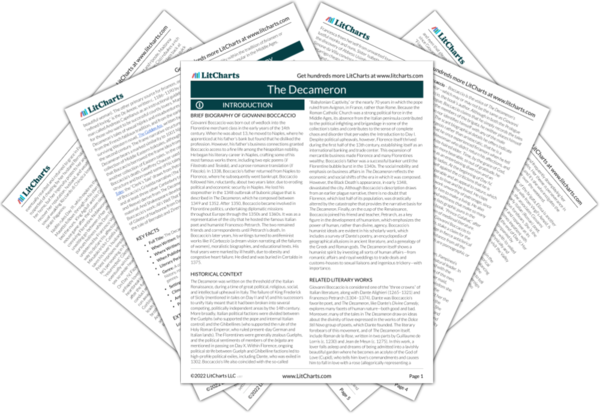Joseph’s wife has taken the threat of the beating seriously and now is as obedient as she was previously perverse. If she began as the misogynistic vision of a bad wife, she is now performing the role of a good one. Yet, other tales in
The Decameron trouble the easy assertion that physical violence is always salutary or necessary for women: in an earlier tale, Calandrino beat his wife, Tessa, for allegedly ruining his magic stone, even though she was not at fault (VIII, 3). This complicates attempts to read the tales as empowering women generally—despite Boccaccio’s claims of love for the fairer sex and the number of female narrators and protagonists.


